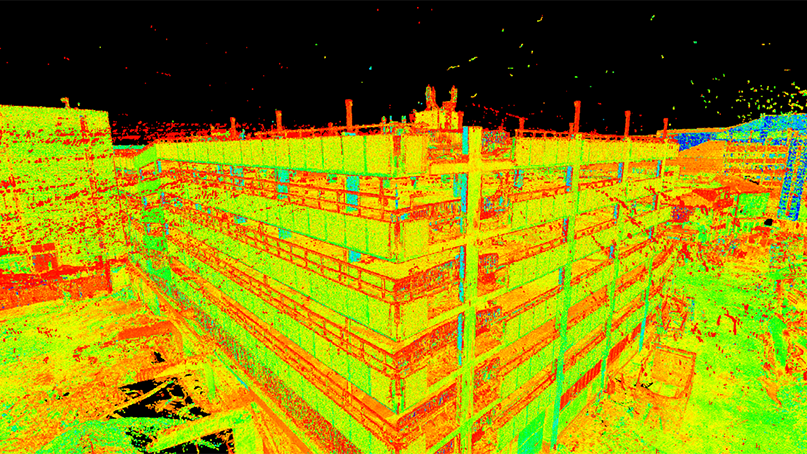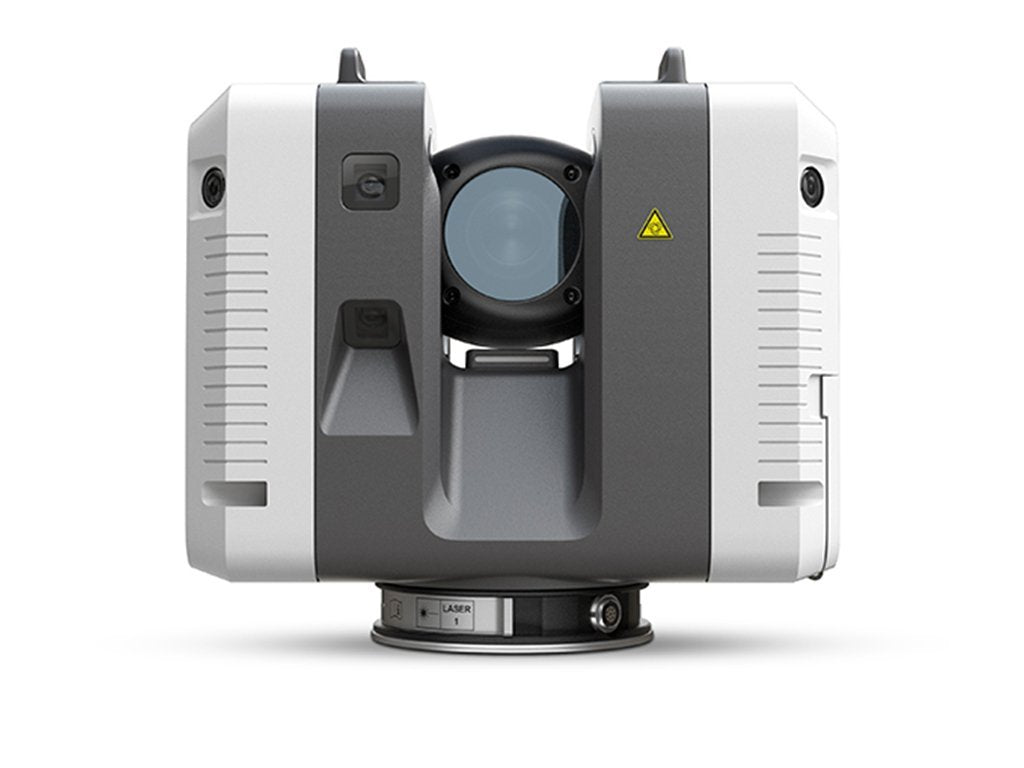Discovering the Applications of 3D Laser Scanning in Archaeology and Cultural Heritage Conservation
The integration of 3D laser scanning modern technology in archaeology and cultural heritage conservation marks a substantial improvement in just how archaeological sites and artifacts are recorded and analyzed. This non-invasive technique provides precise spatial data, exposing elaborate details that were formerly challenging to capture. As the applications of this modern technology remain to progress, different implications for education and learning, documentation, and conservation emerge, welcoming further expedition into its transformative effect on the area.
Comprehending 3D Laser Scanning Technology
3D laser scanning modern technology has reinvented the field of archaeology by supplying precise and in-depth spatial information. This innovative modern technology uses laser light beams to record numerous information factors from an item or website, producing an extremely accurate three-dimensional representation (3D Scanning). The resulting factor clouds can disclose detailed information of historical sites, structures, and artefacts that could be unseen to the nude eye
Utilizing this innovation, archaeologists can record the specific dimensions, shapes, and positions of things with extraordinary accuracy. This method decreases the danger of human error and eliminates the demand for considerable hands-on measurements. The data accumulated can be evaluated and shared easily, promoting partnership amongst researchers. By incorporating 3D laser scanning with GIS and other electronic tools, excavators improve their capacity to picture and interpret historic contexts, leading to much deeper insights right into old societies and settings.
Enhancing Archaeological Documents
3D laser scanning considerably boosts archaeological documents through its capability to create accurate website maps. This innovation helps with detailed artefact evaluation, offering understandings that traditional techniques might neglect. On top of that, it guarantees the preservation of contextual information, which is vital for recognizing the relationships within historical sites.
Exact Site Mapping
While conventional mapping approaches often have problem with recording the detailed details of historical sites, progressed laser scanning technology uses a revolutionary technique to exact website mapping. This technique allows excavators to produce extremely outlined and exact three-dimensional depictions of sites, showcasing topographical variations and structural features with exceptional integrity. The capability to catch countless data points in an issue of mins enables thorough documentation, which can be easily upgraded and shared amongst scientists. Furthermore, laser scanning assists in the measurement of complex geometries that would be hard to evaluate utilizing conventional tools. Because of this, this modern technology improves the accuracy of website maps, adding significantly to the preservation and understanding of social heritage resources.
Comprehensive Artefact Evaluation
Laser scanning technology greatly boosts the analysis of archaeological artefacts, offering scientists with unmatched detail and precision. This method records complex surface structures, dimensions, and includes that conventional documents methods may forget. By creating high-resolution 3D versions, scholars can carefully take a look at artefacts without the threat of damages intrinsic in physical handling. This precision enables for better relative studies, allowing specialists to determine production techniques, stylistic variants, and possible cultural relevance. The capacity to manipulate and picture information in 3 dimensions assists in a much deeper understanding of artefact functionality and usage. Generally, laser scanning cultivates a more complete approach to archaeological paperwork, making certain that essential information regarding artefacts is protected for future study and education and learning.
Preservation of Contextual Data
Protecting contextual information is crucial for enhancing archaeological documentation, as it guarantees that searchings for are recognized within their initial ecological and social structures. 3D laser scanning modern technology significantly adds to this conservation effort by catching in-depth spatial connections among artefacts, frameworks, and their atmospheres. By producing accurate 3D designs, excavators can record the specific locations and alignments of things in situ, helping with a detailed understanding of their context. This technology allows scientists to review and analyze sites long after excavation, keeping the integrity of contextual information. In addition, electronic documents created through scanning can be shared around the world, promoting collective research and public involvement. Eventually, preserving contextual information with 3D laser scanning enriches historical narratives and advertises a much more profound admiration of cultural heritage.
Preservation of Cultural Heritage Sites
As innovations in innovation remain to progress, the preservation of social heritage sites has actually become progressively reliant on innovative techniques such as 3D laser scanning. This technology enables the comprehensive documents of artefacts, frameworks, and landscapes, catching their specific dimensions and spatial partnerships in a non-invasive manner. By developing high-resolution 3D models, researchers can examine and monitor damage patterns, enabling aggressive preservation methods.
In addition, 3D laser scanning promotes the sharing of comprehensive site information with the international community, promoting partnership amongst archaeologists, historians, and guardians. These designs work as invaluable resources for education and learning and public involvement, elevating recognition of cultural heritage problems. Additionally, the electronic documents produced can guard versus loss because of environmental variables, vandalism, or neglect. In general, 3D laser scanning represents a transformative method to the preservation of cultural heritage, making sure that these sites can be researched and valued by future generations.

Remediation and Reconstruction Efforts
The in-depth documents achieved through 3D laser scanning plays a significant role in remediation and restoration initiatives within archaeology. This modern technology gives precise measurements and high-resolution imagery, enabling precise digital designs of artifacts and structures. These versions act as vital references during restoration processes, enabling archaeologists to why not look here make and picture the initial layout informed decisions regarding techniques and materials required for fixing.
Furthermore, 3D laser scanning helps with the reconstruction of harmed or lost components by producing in-depth reproductions. This procedure help in guaranteeing that reconstructions preserve historic honesty while additionally enabling for innovative approaches to bring back websites. The capacity to examine wear patterns and structural weak points via scanned information improves understanding of a website's historical context and its usage gradually. 3D laser scanning not only maintains the physical aspects of social heritage but likewise improves the narrative of history, leading future repair undertakings.
Educational and Research Study Opportunities
The assimilation of 3D laser scanning in archaeology opens substantial instructional and research study possibilities. Academic partnerships can boost the understanding of ancient sites, while specialized training workshops furnish specialists with vital abilities for utilizing this innovation. With each other, these campaigns foster a richer interaction with archaeological methods and methodologies.
Academic Collaborations in Archaeology
Collaborative efforts in archaeology have actually become significantly essential for advancing both instructional and research possibilities. By fostering partnerships among universities, research study institutions, and cultural heritage organizations, these cooperations promote the exchange of knowledge and resources, boosting the top quality of historical studies. Joint projects commonly utilize varied their explanation expertise, enabling complete evaluations and cutting-edge methodologies, particularly in the application of innovations like 3D laser scanning. Such cooperations likewise advertise interdisciplinary techniques, engaging fields such as location, conservation, and history science. On top of that, scholastic collaborations usually bring about the growth of brand-new educational programs and training programs, preparing the future generation of excavators to efficiently make use of sophisticated technologies in their job. Ultimately, these partnerships add to the conservation and understanding of cultural heritage.
Educating Workshops for Specialists
Training workshops for experts in archaeology are significantly important for boosting skills in the application of sophisticated innovations such as 3D laser scanning. These workshops supply individuals with hands-on experience in utilizing innovative tools and software, promoting a much deeper understanding of information capture and evaluation procedures. Professionals can discover to develop exact electronic models of historical sites, which substantially help in documentation and preservation efforts. Furthermore, these training sessions commonly consist of conversations on ideal techniques and instance studies, promoting knowledge exchange among participants. By investing in continuous education, professionals can stay updated on developing innovations, eventually enhancing the efficiency of their research study and cultural heritage conservation initiatives. This dedication to ability improvement is crucial for progressing the area of archaeology.
Future Patterns in 3D Laser Scanning for Archaeology
As developments in innovation continue to improve numerous areas, the future of 3D laser scanning in archaeology guarantees to enhance both the precision and efficiency of website paperwork and analysis. Emerging fads show a growing integration of artificial knowledge and equipment discovering, assisting in automated data handling and analysis. This evolution will permit excavators to evaluate complex datasets quicker, leading to faster understandings into historic contexts.
The assimilation of drone innovation with 3D laser scanning is likely to broaden, making official website it possible for extensive airborne studies of historical websites that are challenging to accessibility. The raising price of scanning tools will democratize gain access to, equipping smaller establishments and independent researchers to make use of these tools efficiently. Furthermore, advancements in digital reality and increased fact will allow immersive experiences for public involvement and education and learning, making archaeological findings more interactive and available. These patterns jointly signify a transformative future for archaeology, boosting conservation efforts and expanding the self-control's outreach.
Frequently Asked Questions
Just How Much Does 3D Laser Scanning Tools Cost?

What Are the Limitations of 3D Laser Scanning?
The restrictions of 3D laser scanning consist of high prices, prospective information processing difficulties, level of sensitivity to ecological problems, and difficulty catching detailed details in intricate surface areas, which can impact the accuracy and completeness of checked depictions. (3D Scanning)

Can 3D Laser Scanning Be Made Use Of Underwater?
Yes, 3D laser scanning can be made use of undersea, however it calls for specific tools and methods to get over difficulties such as water distortion and minimal visibility. Effective applications have been demonstrated in aquatic archaeology and underwater surveys.
Just how Long Does a Scanning Job Usually Take?
A scanning task usually takes anywhere from a couple of days to a number of weeks, relying on the complexity and size of the location being scanned, together with the preparation and post-processing demands associated with the job.
Are There Details Software Demands for Handling 3D Checks?
Yes, specific software demands for refining 3D scans consist of programs with the ability of dealing with big factor clouds, such as Autodesk Wrap-up, Cyclone, or MeshLab. These devices promote analysis, visualization, and assimilation into different applications effectively.
The assimilation of 3D laser scanning innovation in archaeology and cultural heritage conservation notes a substantial development in just how historical websites and artifacts are documented and assessed. 3D laser scanning innovation has actually transformed the area of archaeology by providing specific and thorough spatial data. As improvements in innovation continue to progress, the preservation of cultural heritage websites has ended up being increasingly reliant on cutting-edge approaches such as 3D laser scanning. As improvements in innovation proceed to improve various areas, the future of 3D laser scanning in archaeology assures to boost both the precision and effectiveness of website documentation and analysis. The assimilation of drone modern technology with 3D laser scanning is most likely to expand, allowing comprehensive aerial surveys of historical websites that are hard to gain access to.